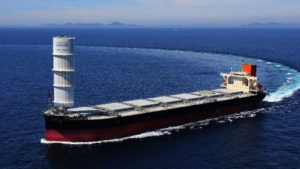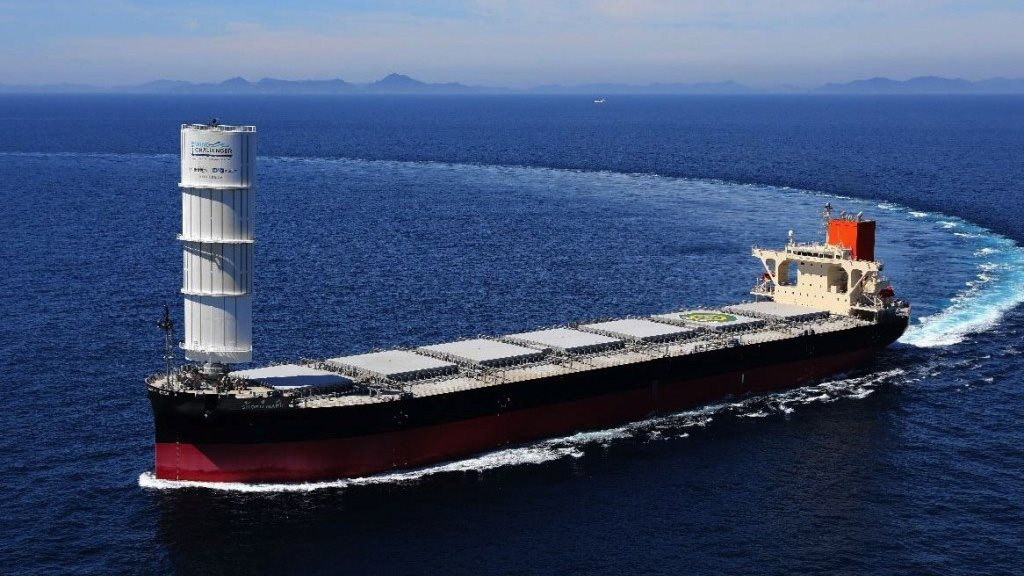The Japanese shipping company Mitsui O.S.K. Lines (MOL), which delivered the 100, 422 dwt (dead-weight tonnage) bulker on October 7, 2022, sailed to Newcastle.
The vessel is claimed to be the “first of its kind” and signals the return of wind power as a viable source of energy, ushering in a new era in modern transport.

The Shofu Maru has a telescopic sail made of fiberglass that can stretch to a height of 55 meters and can transport 80,000 tonnes of coal. According to preliminary tests, the company predicted it would consume 5 percent less fuel traveling between Australia and Japan.
The vessel typically uses 500,000 Liters (L) of fuel for a journey that length; therefore, the reduction amounted to 25,000L of fuel.
The entire decarbonization plan for MOL includes researching wind-assisted propulsion. The MOL Group has established mid- to long-term goals to lower the intensity of GHG emissions in marine transport by roughly 45 percent by 2035 compared to 2019 and reach net zero by 2050.
The maritime industry has made significant contributions to globalization. Ninety percent of global trade is transported by water. However, there is a high environmental cost.
Around one billion metric tons of carbon dioxide (CO2) are released into the atmosphere each year by container ships that travel the world’s waterways, which is three percent of total greenhouse gas emissions.
There is increasing pressure on the global shipping industry to decrease pollution caused by the global merchant fleet. Now, the “Wind Challenger” system offers hope because the effort to reduce ship emissions has so far been unsuccessful.
According to interestingengineering















